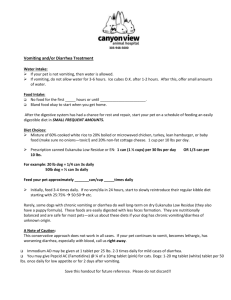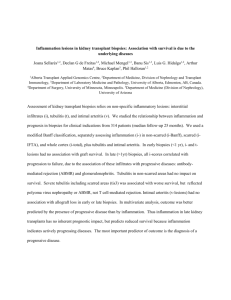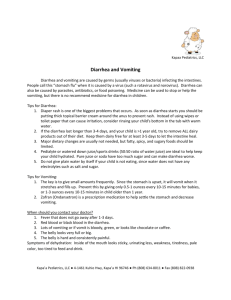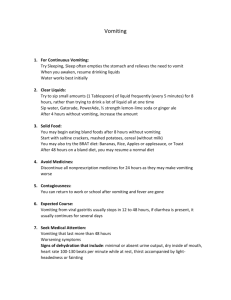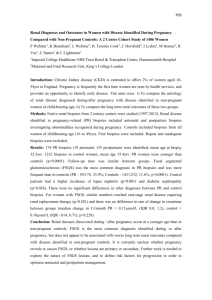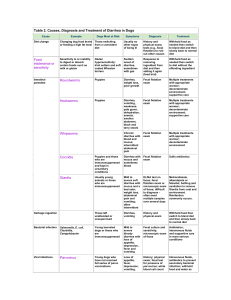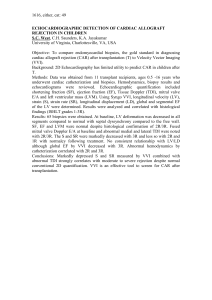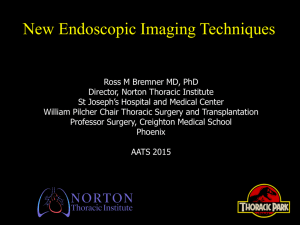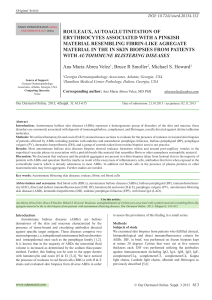Chronic Vomiting and Diarrhea in the Dog
advertisement
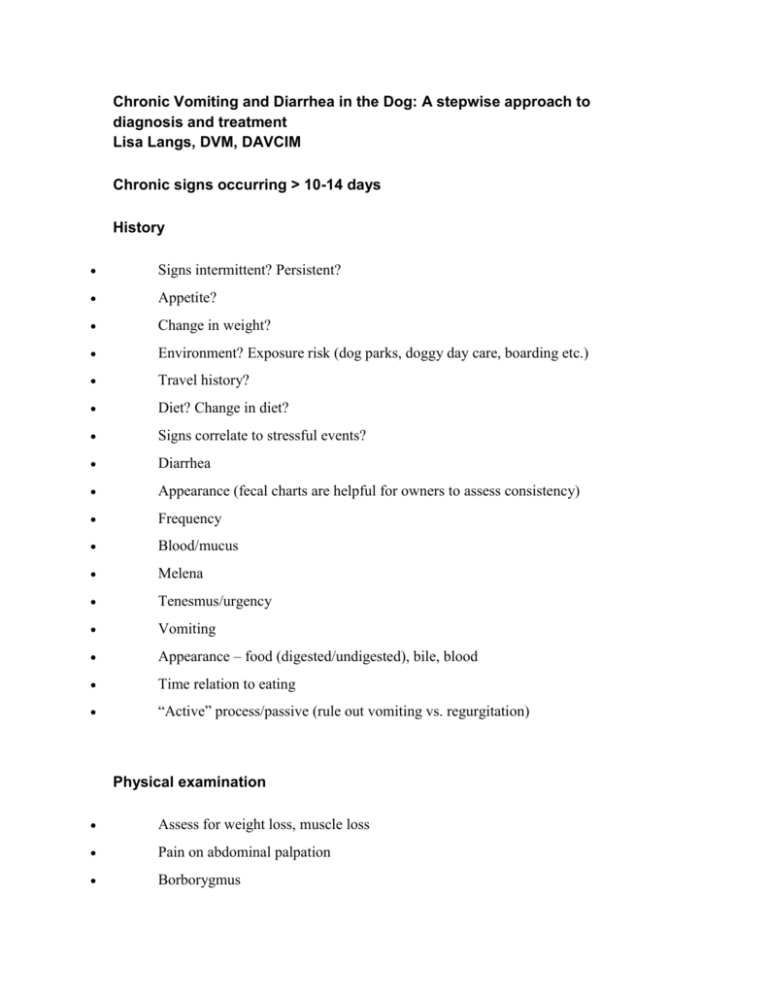
Chronic Vomiting and Diarrhea in the Dog: A stepwise approach to diagnosis and treatment Lisa Langs, DVM, DAVCIM Chronic signs occurring > 10-14 days History Signs intermittent? Persistent? Appetite? Change in weight? Environment? Exposure risk (dog parks, doggy day care, boarding etc.) Travel history? Diet? Change in diet? Signs correlate to stressful events? Diarrhea Appearance (fecal charts are helpful for owners to assess consistency) Frequency Blood/mucus Melena Tenesmus/urgency Vomiting Appearance – food (digested/undigested), bile, blood Time relation to eating “Active” process/passive (rule out vomiting vs. regurgitation) Physical examination Assess for weight loss, muscle loss Pain on abdominal palpation Borborygmus Rectal examination What next? Is patient clinically stable besides intermittent vomiting and diarrhea? More conservative approachreasonable Is patient systemically ill? Losing significant weight? More aggressive approach recommended Clinically stable Fecal exam, prophylactic deworming even if fecal negative Food trial with novel protein/carbohydrate diet, hypoallergenic diet(Remember to go over in detail importance of sticking strictly to diet – no flavored heartworm preventive, drugs, flavored chews/toys, litter box “treats” etc.)Symptomatic medications – metronidazole, Pepcid®, antinauseas…NOT steroids! Systemically ill (or persistent signs despite food trial, symptomatic medications) CBC, biochemistry (with electrolytes), UA Fecal examination Abdominal imaging (radiographs, barium study, ultrasound) GI testing- CPLI, TLI, cobalamin, folate Endoscopic or surgical biopsies Differential diagnoses (not a complete list – more common considerations) Food intolerance Infection (parasites, fungal, protozoal, mycobacterial) Small intestinal bacterial overgrowth Antibiotic responsive diarrhea Chronic pancreatitis Exocrine pancreatic insufficiency Inflammatory bowel disease Lymphangiectasia Lymphoma Hypocortisolemia Signalment, breed and history can help narrow down the likely differentials (older patient gastrointestinal lymphoma more likely than a young patient, hypocortisolemia in predisposed breeds) Gastrointestinal biopsies Endoscopy: Advantages – minimally invasive; visualization and biopsy of focal lesions; multiple biopsies; minimal risks; if steroids/chemotherapy needed for treatment, no delay in treatment Disadvantages – general anesthesia; risk of perforation (small); limited evaluation (duodenum in most patients, jejunum in small dogs/cats); small and superficial biopsies may miss diseases like lymphoma, lymphangiectasia that require deeper biopsies; cost and maintenance of equipment; expertise Surgery: Advantages – multiple biopsy sites; large and full thickness biopsies; assessment and biopsies of other organs; corrective surgery if indicated Disadvantages- general anesthesia; post surgical dehiscence; recovery time – have to wait at least 10-14 days for steroids/chemotherapy if needed for treatment

